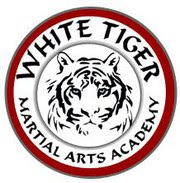Gyokko Ryu (Jewelled tiger school)
Koshijutsu
The oldest ryuha.
Based on Chinese Kempo, with roots in Tiger Crane, strikes are made to muscles and nerves - a lot of Second Rule. There is also Chinese Chin Na - muscle seizing and tearing.
Closely resembles kung fu, tiger crane, with some dragon, snake.
Taijutsu kihon happo comes from this ryu.
The changing of direction mid flow gives us evasion and distance in defence, adds torque and power in our counters, and makes it hard for the opponent to read us so he in turn can't counter.
Indirect attack.
The 10th Soke of Gyokko Ryu founded the Koto Ryu school of koppojutsu
KIHON HAPPO - Eight Infinate
KOSHI KIHON SANPO
Ichimonji
Hicho
Jumonji
TORITE KIHON GOHO
Omote Gyaku
Omote Gyaku Tsuki
Ura Gyaku
Musha Dori
Ganseki Nage
SANSHIN NO KATA
Based on the Godai Five Elements
Chi - Earth
Sui - Water
Ka - Fire
Fu - Wind
Ku - Void
Jo Ryaku no Maki level - Gyokko ryu
This book is Taijutsu - Unarmed defence against unarmed attack
Koku
Renyo
Danshi
Danshu
Hanebi
Keo
Keto
Ketsumiyaku
Sakanagare
Sakketsu
Teiken
Yubi kudaki
Chu Ryaku no Maki 中略之巻 , Gyokko ryu
This book deals with Mutodori - Unarmed defence against short sword or knife attacks
Dashin kata
Hane tsurube
Horaku kata
Housen kata
Korai
Seito kata
Shien
Ujaku kata
Ge-Ryaku no Maki
This book deals with full Mutodori - Unarmed Defence against attack with Katana
Chingan
Fu mo
Iaifū
Ichi geki
Kaisoku
Ko ryaku
Shun soku
Shunu
Gyokko Ryu means Jade Tiger or Jewelled Tiger, depending on the translation. GYOK - Jade, KO - Tiger.
(Byak Ko means White Tiger)
The techniques emphasized in the Gyokko school are:
1. Bone breaking and muscle damage - Koshijutsu
2. Using the fingers for striking and maiming - Shitojutsu
3. Sword and stick fighting - Kenjutsu, and Bojutsu
Gyokko Ryu has 2 main sections:
1. Taijutsu - unarmed against unarmed
2. Muto dori - unarmed against short sword and knife, and unarmed against katana
Cho Gyokko was the teacher who brought the school to Japan from China during the Tang dynasty. It was handed down from generation to generation Soke to Soke. Gyokko Ryū Shitojutsu was established in the Tenmon period (1532 - 1550) with Gyokko Ryū Koshijutsu being developed by the next Soke Toda, the 10th.
Its sister school is the Koto Ryū, also created by Soke Toda.
Both Gyokko Ryū and Koto Ryū were taught by Toda to the subsequent generations, until the late Tokugawa period (mid (19th Century).
Techniques from Gyokko Ryū and Koto Ryū became the foundation for techniques of Togakure Ryū Ninjutsu.
Tiger Striking Schools existed in India, China and Tibet from the Tang Dynasty c 600 - 900 AD, the foundation of Koshijutsu - fast movements to deliver strikes to specific targets on the opponent's body - Kempo.
Gyokko Ryu is the Jewelled Tiger School of Koshijutsu.
The 9 Rules of Gyokko Ryu:
1.The character ‘nin’ means to guard the nation with one’s life
2.Forget the self, be patient, and do not fear dying
3.When in danger say or show nothing
4.As a strong enemy comes, keep an indomitable spirit
5.Serve and protect the master as you must your own parents
6.Vices dissipate your proficiency
7.Being drunk affects your judgment
8.Destroy your enemy’s power but not his life
9.Don’t teach to others without the master’s permission
A maxim regarding reasonable force:
"when a fight is about to start, do not let the opponent win, but take him down with a technique that is only as strong as is needed to match the situation"
And this saying:
"The warrior’s heart is precious and essential"
The Gyokko Ryu and Koto Ryu compliment each other perfectly as a school of koshijutsu and a school of koppokutsu.
To study both schools together is to create a complete system of Taijutsu, and the foundation for the movement and strategy in Ninjutsu.
Short and long ranges, strikes, kicks, locks and takedowns.
Koshijutsu uses muscle and nerve attacking Atemi as a precursor to the lock and TD. Koppojutsu focuses on bone breaking strikes, backed up by locks and td. Two approaches to Kempo Ju Jutsu, both with their roots in Chinese Kempo and Chin Na.
Let's take 5 of these sayings as a Modern Goshin Jutsu of Gyokko Ryu:
1. When a fight is about to start, do not let the opponent win, but take him down with a technique that is only as strong as is needed to match the situation.
2.Forget the self, be patient, and do not fear dying
3.When in danger say or show nothing
4.As a strong enemy comes, keep an indomitable spirit
5. Destroy your enemy’s power but not his life
The Ge-Ryaku no Maki of Gyokko Ryu deals with full Mutodori - Unarmed Defence against attack with Katana
The basic Mutodori of Ninpo is based on 3 of the Kamae of Gyokko Ryu, found in TenRyaku, the Book Of Heaven, as detailed in this thread:
shirotoratiger.proboards.com/thread/944/maki-mutodori-sword-defence
The Kamae used are:
Hira - receiving
Ichimonji - defensive
Jumonji - offensive
Just as the Koshi Kihon Sanpo, from the TenRyaku, is used as a basis before starting the JoRyaku Taijutsu book, The TenRyaku Mutodori are a basis to learn before practicing the GeRyaku Mutadori
